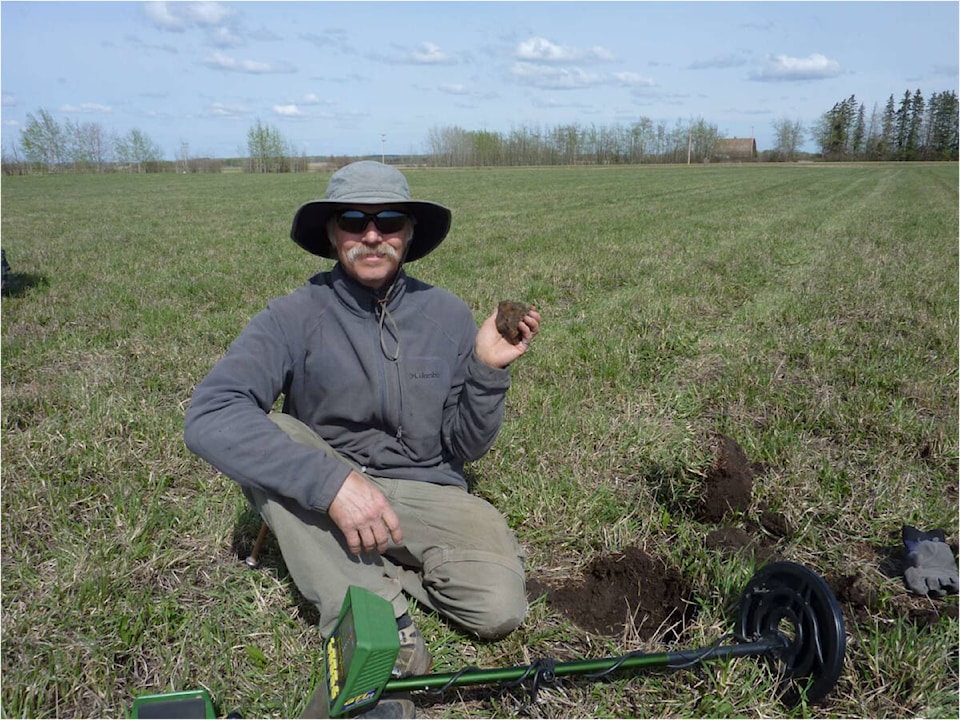If it falls from the sky, Nanaimo Astronomy Society’s next guest speaker is eager to hunt it down.
Murray Paulson, an optical and electrical engineer, has a passion for hunting down and documenting meteorites that end up on Earth after travelling through the Solar System.
In his bio, Murray wrote that he has lived in lucky times, citing the Buzzard Coulee meteorite fall over Saskatchewan in 2008 and the discovery of the Whitecourt meteorite crater in Alberta in 2007. Working those sites, he said, changed his life.
Paulson has worked in the high-tech industry, designing and building lasers and related equipment most of his life. Along with meteorites, he’s had a lifelong passion for radios, building crystal sets when he was a kid and collecting them. He also contributes to the annual Royal Astronomical Society of Canada Observers Handbook.
“I’ve been hunting for meteorites, probably, since the mid ’90s,” Paulson said. “I was finally successful in 2008 when Buzzard Coulee fell. It was bountiful. It was fabulous. It was the most amazing time. My wife and I would go out in the spring after the snow went away. We’d take our trailer out to a plot of land we’d got permission to hunt on and we’d spend the whole weekend there.”
Paulson would bring out people to join in the search for meteorite fragments, walking 10 abreast in “police line type of searches” across a pasture of about 1.6 square kilometres over a period of about two months.
“It was a blast. Every day we were finding a handful of meteorites each and the nice part was that I’d negotiated with the owner that we could buy out the meteorites,” he said. “We got to keep half of them, but if we only found one or two, well, we also got a good price on what we could buy them out for. It was really cool. Everybody enjoyed themselves and everybody went home with a meteorite of their own at the end of it.”
The Buzzard Coulee meteorite is a stony composition chondrite type, which formed in space about 4.5 billion years ago.
“Very shortly after the Solar System condensed and things started cooling down, that’s when this stuff started forming and the clock has been ticking ever since,” he said. “We can see the radioactive decay of components in it and date these meteorites.”
Meteorites, Paulson said, lose about 95 per cent of their mass on their way down through the atmosphere because they “burn like crazy.”
“They’re doing Mach 30 and they’re literally, probably, at 4,000 degrees centigrade,” he said. “They burn up and about 30 kilometres off the ground the atmosphere is dense enough that it stops the forward progress and the meteors usually break up.”
Higher-density iron meteorites can make it all the way to the ground and hit with tremendous energy. Paulson said the iron Whitecourt meteorite – estimated to have weighed about five tonnes – struck with a velocity of about 11 kilometres per second, stopped moving in about eight metres, bounced and shattered, distributing fragments around an impact depression created about 1,100 years ago. His team of hunters mapped the debris field and recorded the weights and measures of more than 3,500 specimens.
READ ALSO: Astronomy club guest will talk about rocks from Mars and the search for signs of life there
Paulson said people have found an estimated 4,000 to 5,000 meteorite specimens around the crater and those who search those sites today might still have a good chance of finding meteorite fragments. But meteorite hunting does require patience to produce the reward of a find.
“I’ve told people meteorite hunting is fun, but it’s a lot more fun finding them,” he said.
Paulson’s presentation, ‘Exploring the Solar System’s Fossils,’ will be made online via Zoom on Thursday, March 23, at 7 p.m. To learn more about the Nanaimo Astronomy Society and how to join the meeting, visit www.nanaimoastronomy.com.
chris.bush@nanaimobulletin.com
Like us on Facebook and follow us on Twitter
